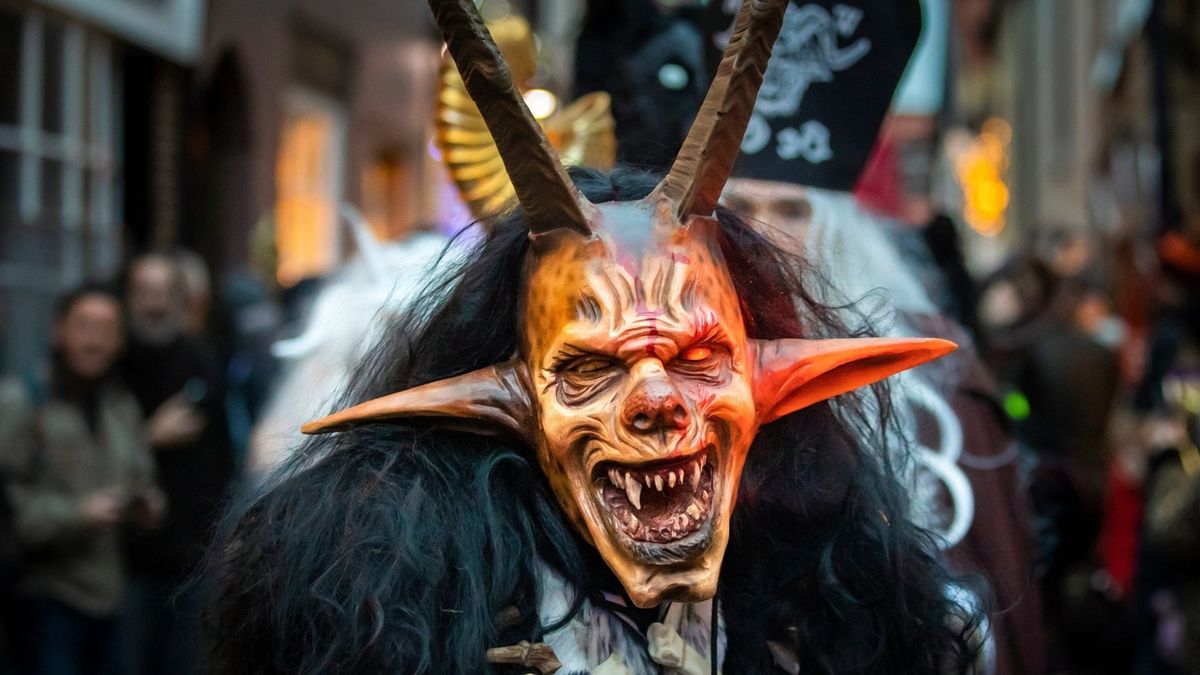
Christmas isn't just about jolly old Santa Claus and cheerful carols. Across the world, there are scary Christmas legends that add a dark twist to the holiday season. Ever heard of Krampus, the horned creature who punishes naughty children? Or the Icelandic Yule Cat, which devours those without new clothes? These tales are more than just spooky stories; they reflect cultural traditions and ancient beliefs. From Europe to Asia, these legends bring a unique, eerie flavor to Christmas. Ready to learn about 35 spine-chilling Christmas legends? Buckle up, because these stories might just make you think twice about being naughty!
Key Takeaways:
- Embrace the Spooky Side of Christmas Discover the chilling legends from around the world, like Krampus and Frau Perchta, that add a thrilling twist to the holiday season. It's not all about Santa and presents!
- Beware of the Yule Cat's Claws In Iceland, the Yule Cat prowls for those without new clothes, adding a spooky incentive to finish chores before Christmas. Don't let this monstrous feline catch you unprepared!
Scary Christmas Legends from Around the World
Christmas isn't always about jolly old Santa Claus and cheerful carols. Many cultures have their own eerie tales and frightening figures associated with the holiday season. These legends often serve as cautionary tales or reminders of the darker side of human nature. Let's explore some of the most spine-chilling Christmas legends from around the globe.
Krampus: The Christmas Demon
Krampus is perhaps one of the most well-known scary Christmas figures. Originating from Central European folklore, this half-goat, half-demon creature is said to punish naughty children during the Christmas season.
- Krampus carries chains and bells to signal his arrival.
- He often appears with a bundle of birch sticks, used to swat misbehaving kids.
- Krampusnacht, or Krampus Night, is celebrated on December 5th, the eve of St. Nicholas Day.
- In some traditions, Krampus is said to drag bad children to the underworld.
- Krampus parades, where people dress up as the demon, are popular in Austria and Germany.
Frau Perchta: The Belly-Slitter
Frau Perchta is a witch-like figure from Alpine folklore. She is known for her dual nature, rewarding the good and punishing the bad.
- Frau Perchta is said to roam the countryside during the Twelve Days of Christmas.
- She rewards diligent spinners with a small silver coin.
- Lazy or dishonest people face her wrath, which includes having their bellies slit open and stuffed with straw.
- Perchta is often depicted with a beaked nose made of iron.
- She is sometimes accompanied by an army of demonic helpers known as Perchten.
Gryla and the Yule Lads
In Icelandic folklore, Gryla is a giantess who, along with her 13 mischievous sons known as the Yule Lads, terrorizes children during Christmas.
- Gryla is said to have an insatiable appetite for naughty children.
- She lives in a mountain cave and descends to towns during Christmas to find her prey.
- The Yule Lads each have unique names and personalities, such as Spoon-Licker and Door-Slammer.
- They visit children on the 13 nights leading up to Christmas, leaving gifts or rotten potatoes in shoes.
- Gryla's husband, Leppalúði, is often depicted as lazy and useless.
The Kallikantzaroi: Greek Goblins
The Kallikantzaroi are malevolent goblins from Greek folklore that emerge during the Twelve Days of Christmas to cause chaos.
- These goblins are said to live underground and spend the year sawing the World Tree.
- They emerge on Christmas Eve to wreak havoc on humans.
- Kallikantzaroi are known for their mischievous behavior, such as souring milk and extinguishing fires.
- They are often depicted as small, black, and hairy with long tails.
- To ward them off, people burn an old shoe or hang a pig's jawbone by the door.
Hans Trapp: The Christmas Scarecrow
Hans Trapp is a terrifying figure from French folklore, particularly in the Alsace region. He is known as the Christmas Scarecrow.
- Hans Trapp was a wealthy, cruel man who practiced black magic.
- He was excommunicated by the Church and exiled to the forest.
- Trapp is said to disguise himself as a scarecrow to capture and eat children.
- According to legend, he was struck by lightning and killed before he could harm a child.
- His spirit is said to roam during Christmas, scaring children into good behavior.
The Mari Lwyd: The Grey Mare
The Mari Lwyd is a Welsh tradition involving a ghostly horse figure that visits homes during Christmas and New Year.
- The Mari Lwyd is represented by a horse's skull mounted on a pole, draped in a white sheet.
- A person hidden under the sheet controls the skull, making it snap and move.
- The Mari Lwyd and its entourage go from house to house, engaging in rhyming battles with residents.
- If the Mari Lwyd wins the battle, it is allowed entry and given food and drink.
- This tradition is believed to bring good luck for the coming year.
The Yule Cat: Iceland's Feline Enforcer
The Yule Cat, or Jólakötturinn, is another Icelandic legend. This giant, monstrous cat is said to roam the countryside during Christmas.
- The Yule Cat preys on those who haven't received new clothes for Christmas.
- It is used as a motivation for people to finish their work and receive new garments.
- The cat is described as being enormous, with glowing eyes and sharp claws.
- According to legend, the Yule Cat belongs to Gryla, the giantess.
- Some believe the Yule Cat's origins are tied to ancient pagan traditions.
The Chilling Truth About Christmas Legends
Christmas isn't just about jolly old Saint Nick. These scary Christmas legends remind us that the holiday season has a dark side too. From Krampus snatching naughty kids to Frau Perchta punishing the lazy, these tales add a spine-tingling twist to the festive cheer.
Knowing these stories can make your holiday gatherings more interesting. Imagine sharing the legend of Gryla, the Icelandic giantess, over a cup of hot cocoa. Or discussing Belsnickel, the fur-clad gift-bringer, with friends. These legends offer a unique way to explore different cultures and their traditions.
So next time you hear sleigh bells, remember there's more to Christmas than meets the eye. Embrace the spooky side of the season, and you'll find that even the darkest tales can bring a little extra magic to your holiday celebrations.
Frequently Asked Questions
Was this page helpful?
Our commitment to delivering trustworthy and engaging content is at the heart of what we do. Each fact on our site is contributed by real users like you, bringing a wealth of diverse insights and information. To ensure the highest standards of accuracy and reliability, our dedicated editors meticulously review each submission. This process guarantees that the facts we share are not only fascinating but also credible. Trust in our commitment to quality and authenticity as you explore and learn with us.


